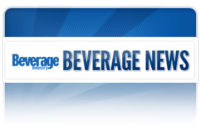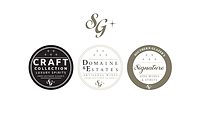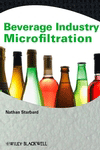Wine & Spirits
By JOANNA COSGROVE
New ad avenues and a cocktail culture continue to
drive sales
“Sex and the City” skyrocketed the popularity of trendy,
colorful cocktails like the Cosmopolitan and the Appletini. And although the series has ended, America’s love affair with cocktails continues. Shawn Starbuck
Kelley, spokesperson for the Distilled Spirits Council of the United States
(DISCUS), says our “cocktail culture” is one of the top drivers
compelling the spirit segment’s growth, alongside improved market
access through Sunday sales, and stability in state hospitality taxes.
Diversified advertising has proved hugely beneficial
for spirits. CNN recently joined a growing list of national cable channels
to run liquor commercials, although most networks follow strict rules for
liquor commercials. For instance, liquor spots run only after 9:00 p.m. and
must include a message that promotes drinking responsibly.
Another huge advertising coup was scored for spirits
this year when the National Association of Stock Car Racing (NASCAR),
reversed its long-standing policy on “hard liquor” team
sponsorships. With upwards of 50 million brand-loyal fans nationwide,
NASCAR’s high-profile sponsorships stand
to boost liquor’s profile considerably.
According to NASCAR, 95 percent of those who attend NASCAR events are 21 years of age and older; 88 percent of those who watch NASCAR on TV are 21 years of age and over; and the average
age of a NASCAR fan is 38 years of age.
According to Bump Williams, executive vice president
and general manager, global consulting, beverage alcohol practice,
Information Resources Inc., Chicago, the overall spirits category has
exhibited positive growth trends of 4.7 percent, driven by increases across
all sub-categories except gin and Scotch whisky (-0.1 percent and -0.9
percent, respectively). Future growth opportunities lie in flavored and
super-premium spirits, with the latter being the fastest-growing market.
Vodka holds the biggest share of the total spirits earnings pie, tallying 27.6 percent of sales. Vodka is
followed by North American whiskey and rum, with 21.6 percent and 13.3
percent of sales, respectively. In terms of dollar sales percent change vs.
a year ago, Irish whisky ranks as the biggest mover and shaker (+13.7
percent), followed by vodka (+8 percent) and rum (+7.4 percent).
“Of the new product introductions, over 43
percent of items were concentrated within the vodka and rum
categories,” Williams notes. “Moreover, the past year has
witnessed the introduction of numerous flavored vodkas and rums,
approximately 36 of 58 (62.1 percent) new items, notably Malibu Mango and
Pineapple flavored rums, Capitan Morgan Parrot Bay Mango and Pineapple flavored rums and Smirnoff Watermelon and Strawberry Twist flavored vodka, all extensions of
already popular sub-brands.”
An interesting side note: Smirnoff Twist flavors
account for five of the Top 10 selling flavored vodkas and 50 percent of
the flavored vodka share.
The world of wine
Americans are also taking a keener interest in wines.
Table wine sales totaled $3.8 billion in 2004. “Domestic table wines
dominate the category, however imported table wines are making inroads,
with 25 percent of the dollar business and double-digit growth (for the
year ending January 2005),” says IRI’s Williams.
All wine price segments are experiencing growth, and
according to forecasts by the International Wine & Spirits Record
(IWSR), by 2008, wines sold at more than $5 a bottle will represent 47.8
percent of the total volume consumed in the United States. Between 2003 and
2008, wines in the $5 to $10 price segment should increase the most (+30
percent), while those sold for less than $5 a bottle should witness new and
significant growth after a period of decline.
IWSR also reports that the United States is poised to
become the leading consumer of still light table wines by 2008. Americans
are projected to be drinking more than 2.7 billion liters of still light
wines by 2008, catapulting volume consumption ahead of Italy and France to
the top position.
French wine consumption in the United States has
declined, but according to a new study from Delaitte & Co., New York,
opportunities in the medium-price range ($6 to $12 per bottle) still exist.
“These studies tell us that a strong demand continues for imported
wines that are simple to understand and enjoy, with a good balance of
quality and price,” says company President Alain-Serge Delaitte.
“French importers can take advantage of this trend as long as they
adapt their wines to consumers’ tastes.”
U.S. wine exports, 95 percent of which are from
California, surged to $794 million in 2004, a 28 percent jump over the
previous year, according to figures released by the U.S. Department of
Commerce. Exports exceeded the previous year by $173 million – by far
the largest yearly increase ever. By volume, exports increased 29 percent
to 119 million gallons (450 million liters).
The top market for California wine is the United
Kingdom, which experienced a strong 41 percent increase in revenues to
nearly $300 million and a volume jump of 20 percent to 38 million gallons.
The other leading markets are: Canada, $123.8 million; the Netherlands,
$85.6 million; Japan, $82.1 million; Germany, $26.8 million; Mexico, $14.5
million; Switzerland, $14 million; Denmark, $14 million; Ireland, $13.9
million; Belgium/Luxembourg, $13.4 million.
“The weaker dollar has allowed California
wineries to better compete at key price points in the world export
market,” says Joseph Rollo, international director at the Wine
Institute, an association representing 821 California wineries and
affiliated businesses. “The wineries are now reaping the benefits of
their hard work and marketing efforts of the last few years and
establishing brands in major markets.”
Nearly one in every seven bottles of wine consumed in
the United Kingdom now comes from California, and the Wine Institute
reports that exports to the European continent (excluding the United
Kingdom) reached a record 10.6 million cases in 2004.
Packaged California table wines account for most of
the sales, which, along with other U.S. table wine exports, totaled $592
million, up 19 percent. Bulk wine sales grew 87 percent to $81 million, as
California wineries realized cost savings by exporting their finished bulk
wine and bottling it abroad. U.S. champagne/sparkling wines account for $13
million; dessert wine, $43 million; and fermented beverages and other
wines, $64 million. BI



